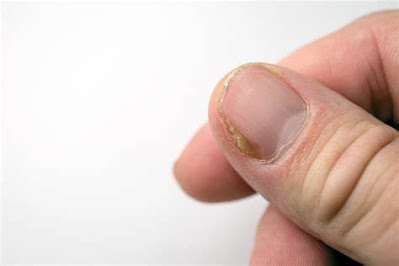Nail fungus, also known as onychomycosis, is a common fungal infection that affects the nails on both the hands and feet. This condition can be both unsightly and painful, and it can also lead to further complications if left untreated. In this article, we'll discuss what nail fungus is, how it develops, and what you can do to prevent and treat it.
What is Nail Fungus?
Nail fungus is a type of fungal infection that affects the nails on the hands and feet. This condition is caused by a group of fungi known as dermatophytes, which thrive in warm, moist environments. These fungi are also responsible for other common skin conditions such as athlete's foot and jock itch.
When nail fungus develops, it typically starts as a white or yellow spot under the tip of the nail. As the infection progresses, it can cause the nail to thicken, become discolored, and even become distorted in shape. In some cases, the nail may become so thick that it can be difficult to trim.
How Does Nail Fungus Develop?
Nail fungus develops when the fungus enters the nail bed through a small cut or separation between the nail and the skin. Once inside the nail bed, the fungus begins to grow and spread, causing the nail to become infected. Certain factors can increase the risk of developing nail fungus, including:
- Walking barefoot in public areas such as locker rooms and swimming pools
- Wearing tight-fitting shoes that don't allow your feet to breathe
- Having a weakened immune system
- Suffering from a chronic medical condition such as diabetes
- Having a history of athlete's foot
How Can Nail Fungus be Prevented and Treated?
Preventing nail fungus involves taking a few simple steps to reduce your risk of infection. These steps include:
- Washing your feet regularly and keeping them clean and dry
- Wearing shoes that fit properly and allow your feet to breathe
- Avoiding walking barefoot in public areas
- Wearing sandals or flip-flops in public showers or locker rooms
- Avoiding sharing nail clippers, files, and other personal grooming items
If you do develop nail fungus, there are several treatment options available. These include:
- Topical antifungal creams or ointments
- Oral antifungal medications
- Medicated nail polish
- Laser treatment
The treatment that is right for you will depend on the severity of your infection and other factors such as your overall health and medical history. It's important to seek treatment as soon as possible to prevent the infection from spreading and causing further complications.
Conclusion
Nail fungus is a common and unsightly condition that can cause pain and discomfort if left untreated. By taking simple steps to prevent infection and seeking prompt treatment if you do develop an infection, you can minimize your risk of complications and keep your nails looking healthy and strong.
If you're concerned about nail fungus or have any other concerns about the health of your nails, be sure to talk to your doctor or a qualified healthcare professional.




0 comments:
Post a Comment
Note: Only a member of this blog may post a comment.